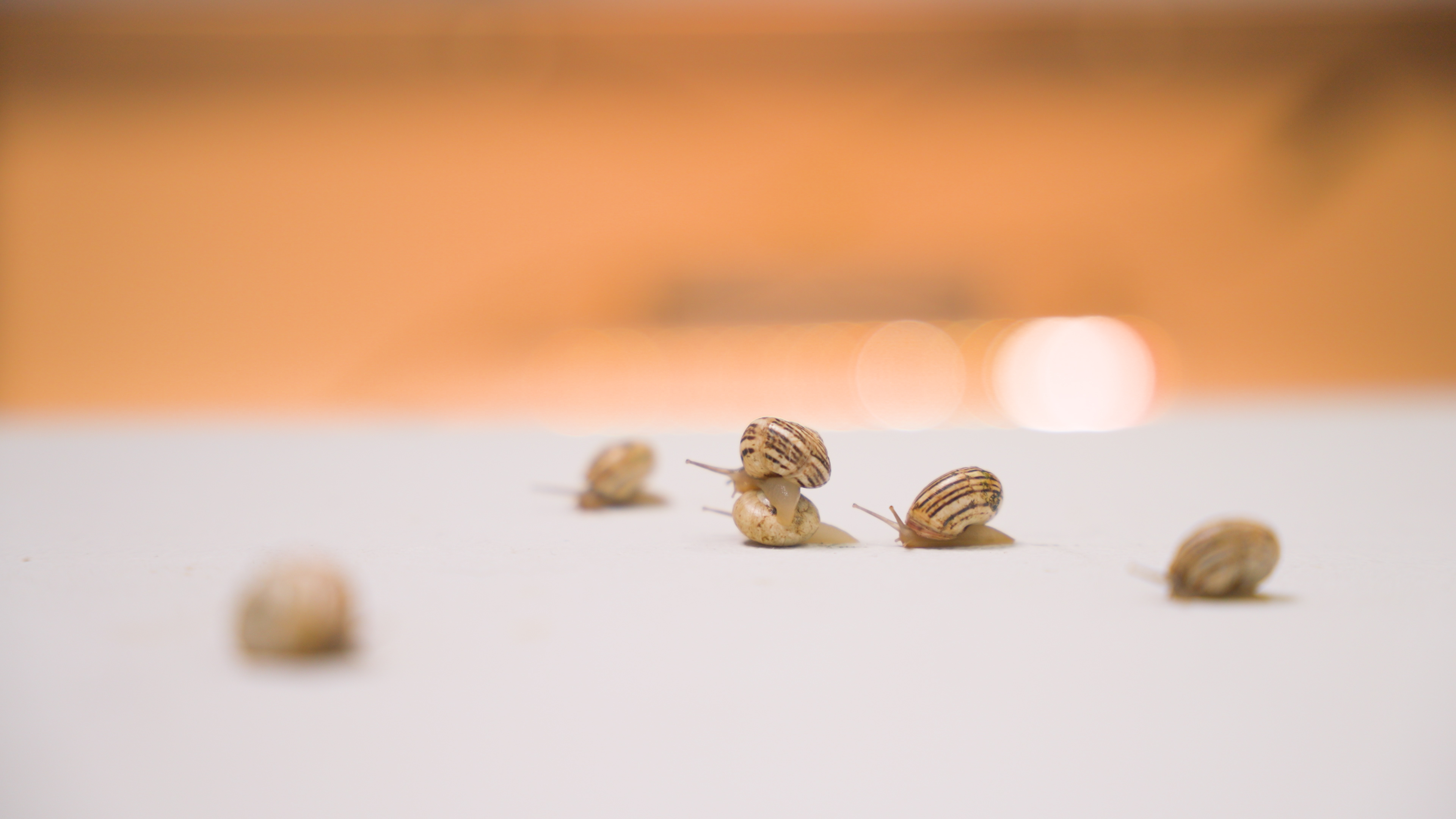Media release
From:
A secret ingredient in snail trails is helping the pests save themselves from poisons spread to protect farms and gardens across Australia.
University of the Sunshine Coast scientists were surprised to uncover the mighty mucus mystery during research into the reproductive biology of the white Italian snail Theba pisana.
While studying the invasive hermaphrodite species in the lab, the UniSC team found that the snails’ trails contained large amounts of an enzyme that can neutralise toxins in pesticides.
“It’s an exciting result because we weren’t expecting this in a land snail species,” said PhD researcher Inali Lutschini.
“This mutated enzyme has been found previously in insects like ticks and flies that also developed chemical resistance over time.”
The paper has been published in international science journal PLOS One.
Professor of Functional Genomics Scott Cummins said the team was already working to use the finding against the snails and hopefully reduce the need for organophosphates in the environment.
“The evidence suggested the snails were deploying the enzyme in their slime as a shield when they slid over pesticides,” he said.
“On an even smarter note, they were secreting it in abundance at times of the year when they’re mating and at their most mobile – and therefore at biggest risk in the environment.”
He said invasive snails were a major problem across the world including Australia where they cost the grain industry $170 million each year.
“Pesticides called molluscicides have been commonly used but snails are becoming increasingly resistant to the active compounds,” he said.
“Our research has for the first time explored exactly how snails are becoming more resistant, and this knowledge may be applied to new approaches to counteract resistance and assist Australian agriculture.”
And one of those novel approaches to biological or gene-based control could be spider venom.
“We’re now investigating the potential for natural arachnid venoms in snail control. Spiders are well known for preying on insects but certain species such as tarantulas may feed on snails.”
Inali, who has two UniSC degrees in biotechnology and molecular biology, said Theba pisana had proliferated across southern Australia since the early 20th century.
“It is tiny in size but breeds quickly and can cause huge damage, contaminating crops of legumes and cereals such as wheat during harvesting,” she said.
“Our research suggests that rotating types of pesticides may be more effective than increasing concentrations because snails are able to evolve defence mechanisms.”
Slow snails: fast facts
Species on move: This research can inform efforts to better manage other species from the common brown snail to the invasive giant African snail, which tops Australia’s list of National Priority Plant Pests.
Slime in cosmetics: Snails are well known for secreting mucus for various purposes including locomotion and as a protective mechanism against environmental stressors – which is why it can be found in human cosmetics such as face creams.
Enzyme affects brain: The enzyme we found – called acetycholinesterase – is critical for brain functioning in many species, including humans. And yes, snails have a type of brain. Organophosphates aimed at stopping other pest species have also targeted this enzyme.
Multimedia




 Australia; QLD
Australia; QLD


